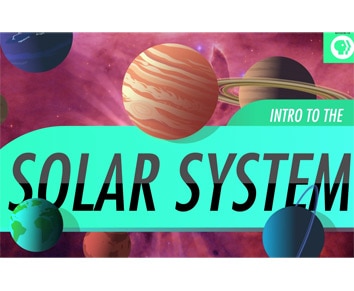Create a free profile to get unlimited access to exclusive videos, sweepstakes, and more!
Crash Course Astronomy Episode 9: The Solar System

OK, over the past eight episodes of Crash Course Astronomy we’ve covered a lot of basics: What you can see, how you can see it, and how some basic forces sculpt what’s out there.
So. What’s out there?
Turns out, you don’t have to go far to find wonders: May I please introduce you to our local neighborhood, the solar system?
I wrote this to give you a taste of what’s what, knowing that the next few episodes will dive into detail on each planet, the asteroids, comets, and more.
I also wrestled with how much to say about Pluto, and in the end just used it here as a means to talk about how we define things and what we mean by “planet.” I get lots of email about this whenever I write about it. People agree, they disagree, they suggest ways we can manufacture a definition. I hope I covered that in this episode, but if you have more questions, I suggest reading this earlier post. And this one.
I’ve also written about geocentrism and heliocentrism before; as a coordinate system (like, observing stars from a telescope on Earth) geocentrism is fine, but if you want to send probes to other planets, it’s best to switch to the heliocentric frame. And from a philosophical standpoint, capital-G Geocentrism is simply wrong.
One thing I wanted to cover but didn’t have time was, where does the solar system end? This gets a little confusing—I’ve written about this too—because again it’s a matter of definition, and that will always get you into trouble. The Universe doesn’t really care about our definitions.
Our best bet is to keep our eyes and our minds open. Let the cosmos tell us how to categorize things. Don’t be too rigid, and do let things exist in the gray areas. You’ll find a lot more subtlety and wonder that way.


























